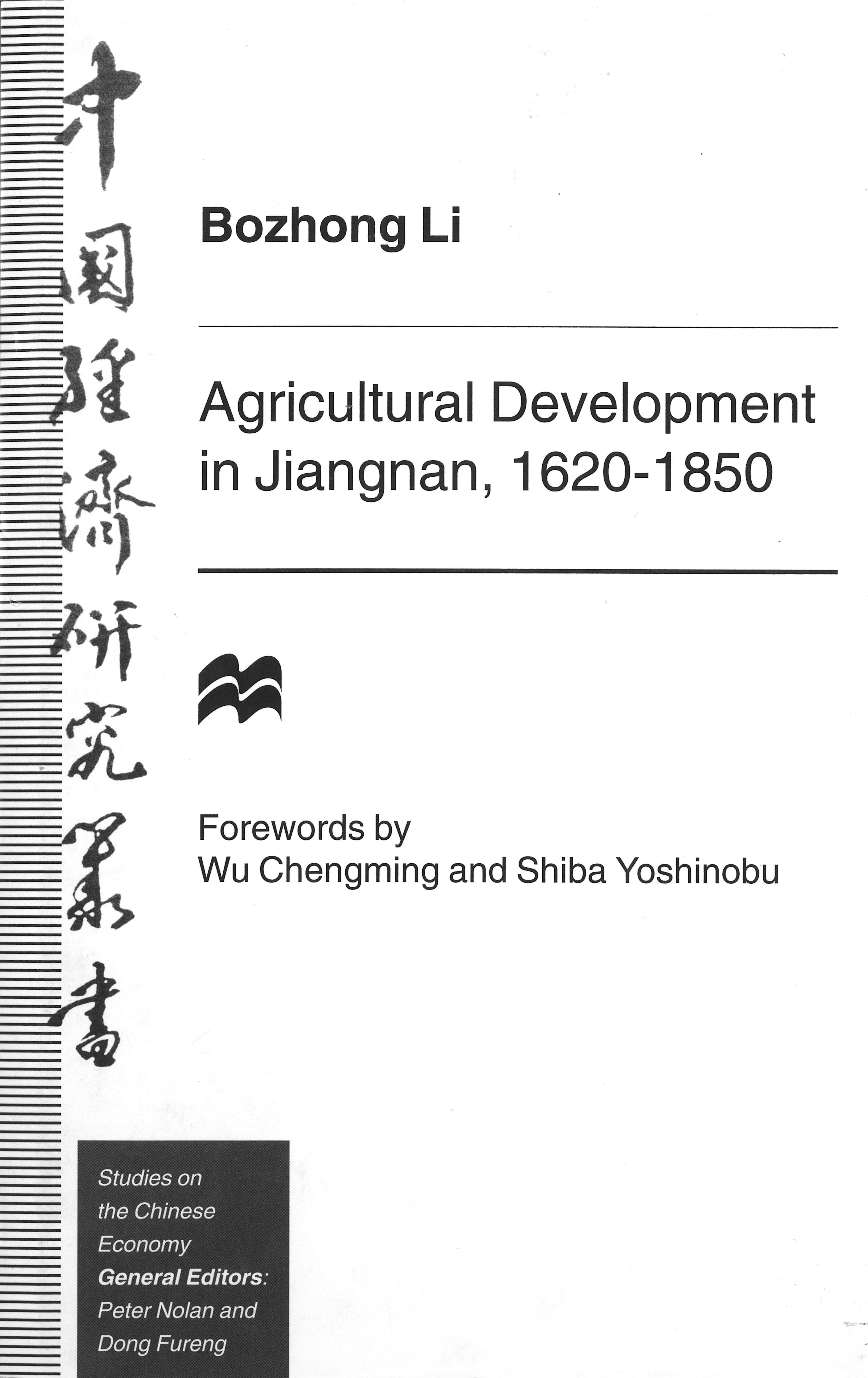Agricultural Development in Jiangnan, 1620-1850
The author makes an intensive analysis of changes in key factors of production and in patterns of expansion in agricultural production in China’s Yangzi delta during the three centuries before 1850, resulting in an increase in both land and labor productivity.
Review:
Like most other aspects of Chinese intellectual life, economic history suffered badly during the 1960s and 1970s. In the generation that began rebuilding the field thereafter, probably the single most productive scholar has been Li Bozhong, now of Qinghua University. Professor Li has also been noteworthy for his efforts throughout the last twenty years to encourage Chinese scholars to engage seriously with the very different paradigms favored by most of their colleagues in the West, Taiwan and Japan — and vice versa. Yet only a fraction of Li’s massive scholarly output is available to those who do not read Chinese. The following review attempts to hit many of the highlights of his work by considering two recent complementary volumes, only one of which is translated: Agricultural Development in Jiangnan, 1620-1850 and Jiangnan de zaoqi gongyehua (Proto-industrialization in Jiangnan). Together, they paint a fascinating, though incomplete, picture of the economy of the Yangzi Delta (or Jiangnan),1 which was the richest region in China, and among the richest regions in the world from roughly 1000 until the mid-nineteenth century, when the Opium Wars, Taiping Rebellion (1851-64 — probably the most destructive civil war in history, killing perhaps as many as 20,000,000 people), and the onset of rapid industrialization in Northwestern Europe fundamentally changed the social, political, and economic landscape.
(Reviewed for EH.NET by Kenneth Pomeranz, Department of History, University of California at Irvine.)
http://eh.net/bookreviews/agricultural-development-jiangnan-1620-1850
